The Corsair K63 Wireless Mechanical Keyboard Review: PC Gaming Untethered
by E. Fylladitakis on September 16, 2019 10:30 AM ESTThe Corsair K63 Wireless Mechanical Gaming Keyboard
Surprisingly, regardless of its name, the Corsair K63 is not based on the design of the K70/K90 series. Although there are accents that are reminiscent of the design of the now legendary K70, the K63 seems mostly based on the design of the STRAFE series instead, with the keyboard having a plastic frame instead of an aluminum top cover. So on the whole, the K63 looks like a mix of the STRAFE’s design but with the extra top area buttons and the wrist rest found on K-series keyboard.
The plastics that form the frame of the Corsair K63 are of great quality, with excellent rigidity and scratch resistance. The company’s logo and short push buttons are hosted on a narrow band right above the mechanical keys. Beneath the plastic frame, a colored steel plate secures the mechanical switches and the main PCB. The keycaps are made from ABS plastic and have large, futuristic characters, while the Space Bar key is textured. The surface of the Space Bar should also decay less easily, as Space Bar keys with their right side heavily worn out are a common phenomenon.
The Corsair K63 is a tenkeyless keyboard, the core layout of which does not fully adhere to the recommended ANSI layout. Compared to the standard ANSI layout that has a 6.25× Spacebar and seven 1.25× bottom row keys, the bottom row of the keyboard has a 6.5× Spacebar, two 1.25× ALT, two 1.5× CTRL, and three 1× WIN/Fn bottom row keys. This is the “gaming” layout that reduces the size of the “unnecessary” WIN/Fn keys in favor of the more useful CTRL/Spacebar keys. Corsair has been using this layout on all of their advanced keyboards.
Basic OS functions (back, home, switch, search) have been inserted as secondary commands in the F1-F4 keys, and are accessible by holding down the Fn key. Similarly, the keyboard’s connectivity is controlled via Fn + F9-F10 keystrokes. Fn + F12 is the sleep command. There is no volume control wheel as those found on the rest of the K-series keyboards but Corsair did install three volume control buttons (mute, volume down, volume up).
The bottom of the K63 is relatively basic, with four small anti-skid pads at the edges of the keyboards and two tilt adjustment rear feet. There are no anti-skid pads on the feet but the keyboard does not easily move while on a typical wooden desk. The tilt adjustment feet open sideways, so they will not accidentally close if the keyboard is pushed backwards.
On the rear side of the keyboard we can spot a small micro USB port for data and charging, and a small on/off switch. The small port is vulnerable to damage and the cable should always be removed if the keyboard is to be packed and transported, but care should also be taken not to force the connector while the keyboard rests on a desk.
Beneath the keycaps we spot genuine Cherry MX switches with blue LEDs. Corsair only offers the K63 with Cherry's MX Red switches, which are essentially the "baseline" switches for the company, offering a solid balance when it comes to linearity and responsiveness. Cherry’s cross-type supports can be spotted beneath the larger keys.
Despite its wireless design, Corsair used typical full power LEDs on the K63. As a result, the backlighting of the K63 is just as strong as that of most wired keyboards. Furthermore, as the backlighting is fixed, Corsair also dyed the steel plate with the exact same color as the LEDs. This creates a stunning visual effect, creating the illusion of perfectly uniform lighting surrounding each key.
Removing the covers of the Corsair K63 reveals the secondary PCBs, the rubber dome buttons and the battery of the keyboard. Corsair installed a cylindrical 2950 mAh CR18650 battery, which we're very happy to see. As this is a very common battery type that can be easily found with many electronics retailers, this will make it easy to find replacement parts in the future once the battery eventually requires replacement.
The heart of the keyboard is a NXP LPC11U68JBD100 microprocessor, an ARM Cortex-M0+ based chipset with a CPU frequency of 50 MHz, 256 kB Flash memory, 4 kB EEPROM and 36 kB SRAM. Corsair is using this particular chip on most of their advanced mechanical keyboards, not only because of its processing power but also because of its impressive internal flash memory.



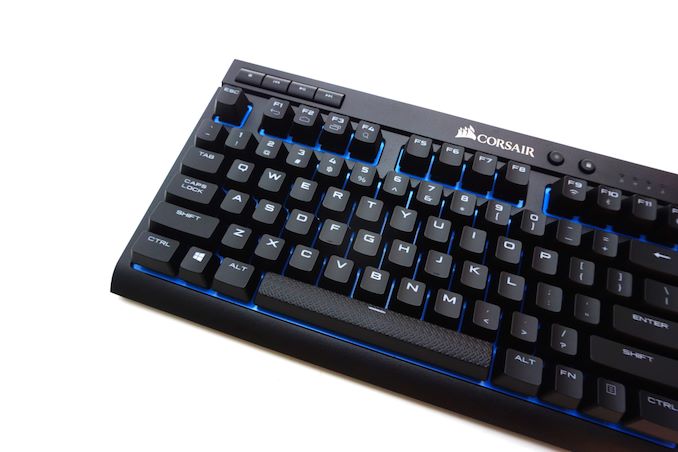
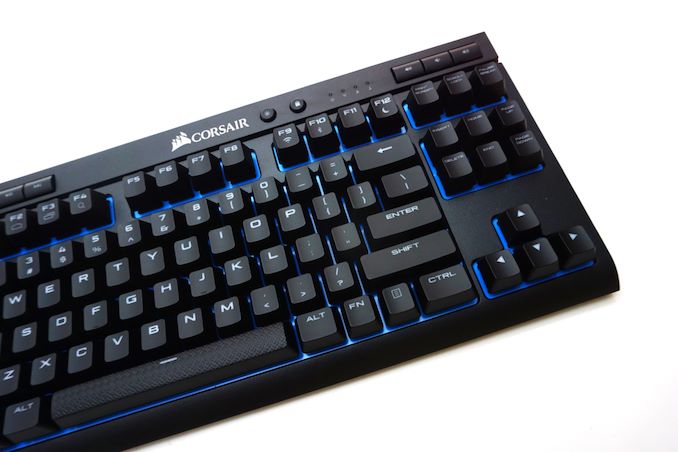
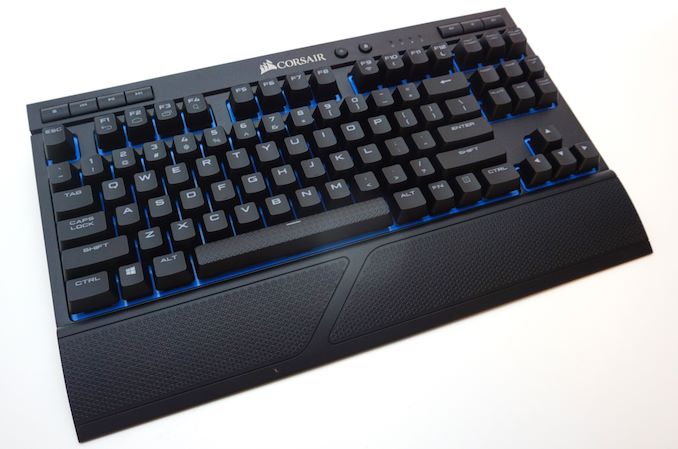
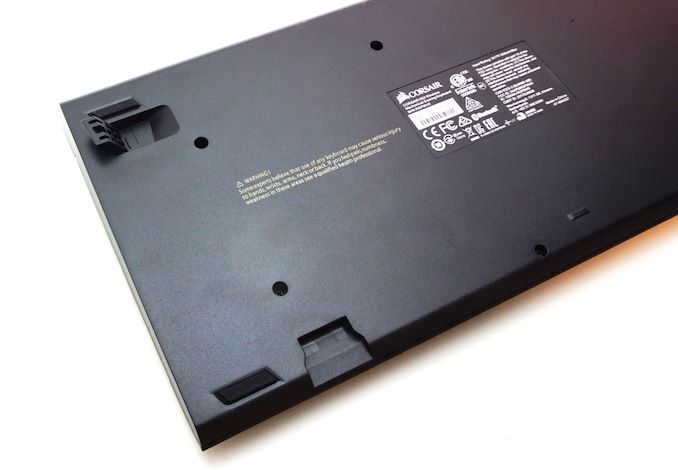
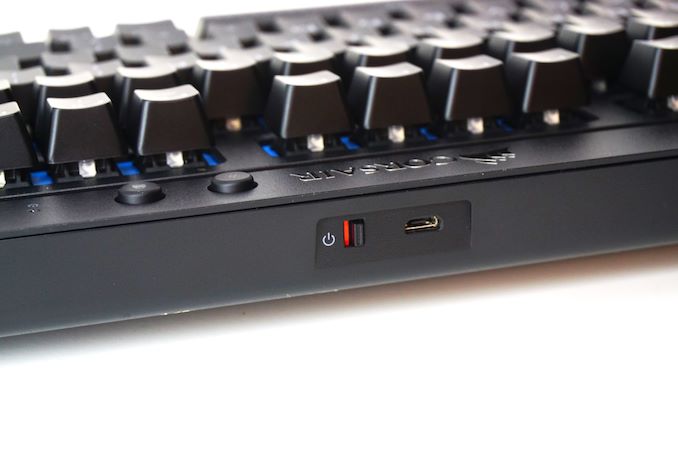
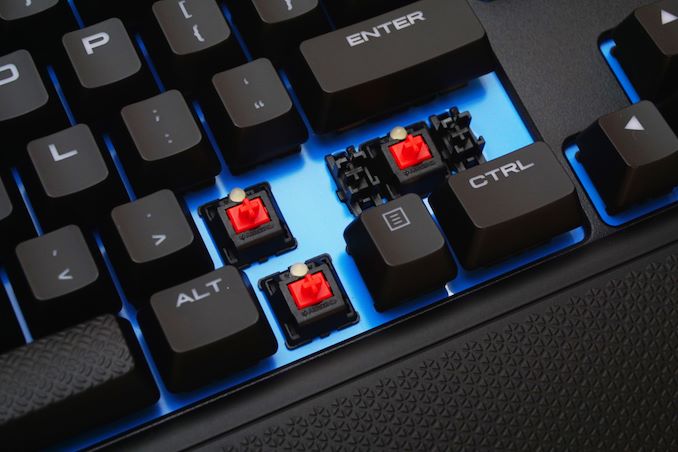
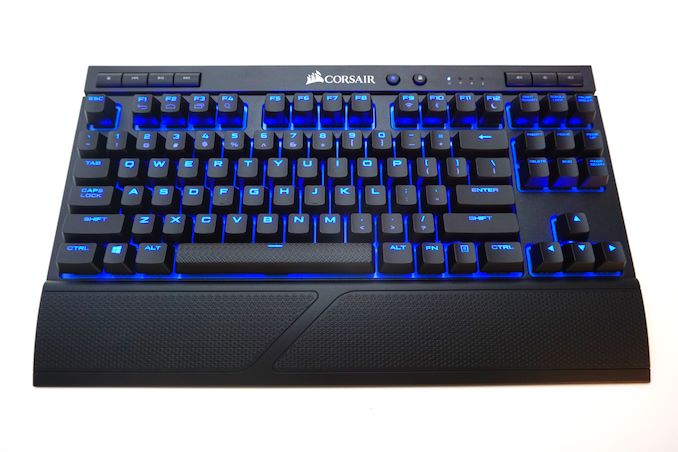
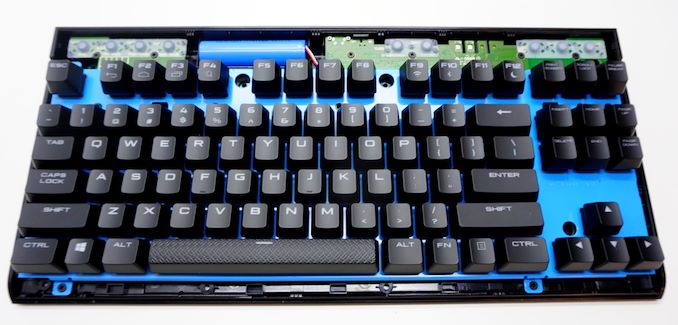
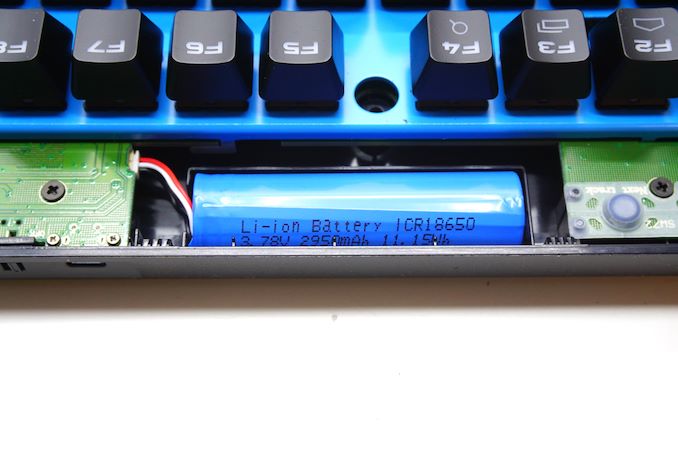
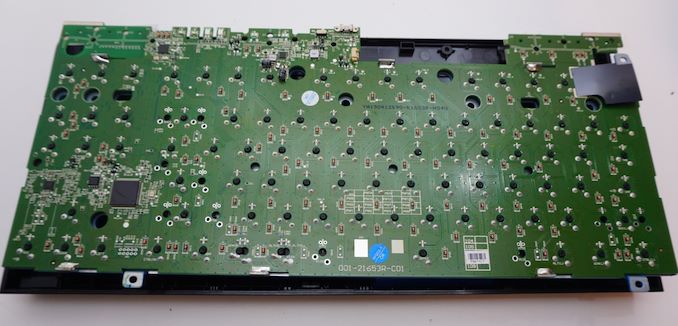
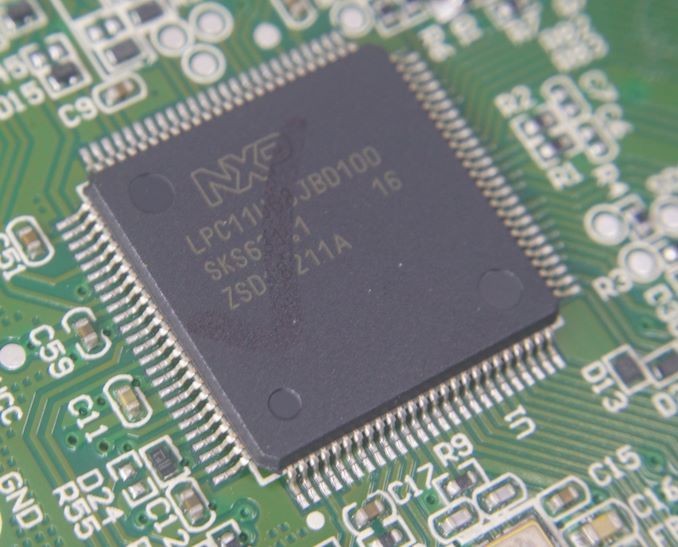









75 Comments
View All Comments
LauRoman - Monday, September 16, 2019 - link
That site is a piece of crap, automatically generated from Amazon reviews. Do you trust those reviews?It is quite similar to those sh**ty sites that auto generate the same comparison between two different gpus or cpus by comparing only the number of shaders or cuda cores or simple things. Not temperature or noise or boost clocks or throttling or anything not on the datasheet.
I can't really say anything about the quality of their stuff, because i only ever owned exactly one of their products. A memory kit in the tail end of the C2D/DDR2 era. I usually found better performance for the price, or comparable at a lower price.
I need more than a site that autogenerates reviews based on untrustworthy sources
Sivar - Monday, September 16, 2019 - link
Their K70 keyboard is certainly not junk -- it is the best designed keyboard I have used. The base of each key is mounted flush with an aluminum plate, making cleaning easier and spills less damaging. The volume knob, also solid metal, makes volume changes easy without the need to look down. The RGB lighting is a bit gimmicky, but can be useful when programming important keys to emit a specific light color, at least in the dark.The Corsair Vengeance C70 case is among the best designed cases I have ever used, and I have used a lot of them. The cable routing, ease of access to internals, easy disassembly, and top-venting is among the best I have seen. Indeed, the front fascia of the case did have a problem where its mounting was too weak and thus it could too easily be removed, but that was the only flaw I found in an otherwise well-priced and well-designed (and sadly, now discontinued) case.
That said, my Corsair gaming mouse has lost partial functionality in its "back" button as well as its middle-click (with the wheel as a button), which I use frequently. The wheel also always turned too much when using it as a button, leading to unintended scrolling. Not a great design, and mediocre overall hardware quality (though sample size = 1, I may just have a dud).
My Corsair Void Pro wireless headset had connection issues starting about a week after I got it, compared to my 7-yr-old Logitech wireless headset which is amazingly still going strong, albeit with limited battery life.
You win some, you lose some, but with Corsair keyboards, at least the K70, I'll easily call it a win.
olivaw - Monday, September 16, 2019 - link
About gaming mouse switches, if you are interested, there is an interesting analysis about the absurdly high rates of switch failures by Alex Kenis in his youtube channel: https://www.youtube.com/watch?v=v5BhECVlKJA and https://www.youtube.com/watch?v=NhhRTUrz0R8.Warning: heavy geekery ahead!
Sivar - Wednesday, September 18, 2019 - link
This is good stuff, thanks!piiman - Saturday, September 28, 2019 - link
old news and has been fixedcpupro - Monday, September 16, 2019 - link
Corsair makes good products, never had problems with their stuff and they have good product support.cpupro - Monday, September 16, 2019 - link
I talk about RAM modules, don't know about other stuff.Oliseo - Monday, September 16, 2019 - link
""No where have I tried to present false information"And here you are, doing just that. It's hard to take someone seriously when they have no integrity.
Sivar - Wednesday, September 18, 2019 - link
Let's not conclude the he has no integrity from a few lines of text. I don't like how the original post was worded (hence my initial reply), but that could be a misworded sentence, a result of a bad day, etc.lilkwarrior - Monday, September 16, 2019 - link
Actually, there are wireless Mouses & keyboards that are more reliable (besides battery running out) & have less latency.This is especially the case with mouses as of this year & last year with Logitech efforts on the matter